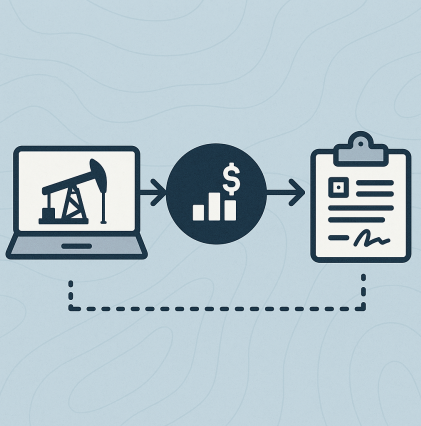
Integration as Advantage: Engineering → Accounting →Vendors (No Silos)
Eliminate the “silo tax” and let the barrel tell one story from wellhead to revenue
Most operators don’t suffer from a data shortage. They suffer from data drift—the same facts re‑typed in different systems by different teams until nothing quite matches. The cure isn’t another report; it’s integration that preserves a clean chain of custody for every barrel.
The Silo Tax (and how to end it)
- Engineering to Accounting. Daily production hits the allocation system; the same volumes should drive revenue and JIB—without manual translation.
- Accounting to Vendors. Work orders, AFEs, and invoices should reconcile by design, not detective work.
- Vendors to Field. The moment a job closes, the invoice and field ticket already agree on scope and price.
What this looks like in practice
- An upstream suite connects land, production, and accounting so the business runs on a single source of truth.
- E‑invoicing pipelines reduce cycle time and exceptions by moving approvals where the work happens.
Practical integration checklist
- Map the golden records (wells, AFEs, vendors).
- Kill the swivel‑chair steps between systems with APIs you control.
- Push approvals to the edge (foremen and engineers) where context lives.
- Close the loop automatically: work order → field ticket → invoice → actuals.
Final thought
Integration isn’t software first—it’s stewardship. When the same truth flows through every hand‑off, speed increases, cost drops, and trust compounds.
Hear more in our Cougar Energy episode with Robert Wichert—now on the Wisdom at the Wellhead YouTube channel here - https://youtu.be/wTEYnWUMbBg
